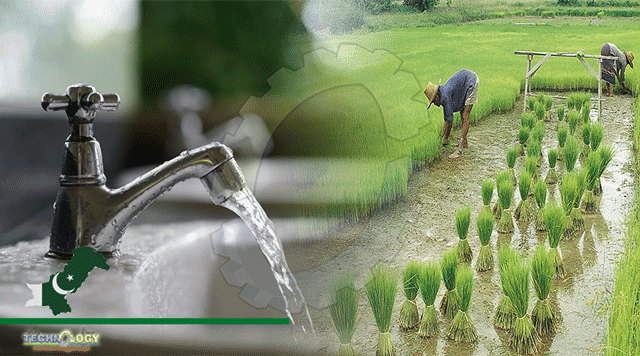PAKISTAN Is Facing A Serious Threat To Its Food Security And Rural Livelihoods Because Of Escalating Water Shortages.

PAKISTAN Is Facing A Serious Threat To Its Food Security And Rural Livelihoods Because Of Escalating Water Shortages. In Punjab alone, more than half of the province’s share of water in agriculture is lost in canals and watercourses, while inefficient conventional irrigation method of flooding the fields also result in wastage. The water scarcity for agriculture is projected to increase manifold in the years to come as droughts become a norm in different regions — especially Balochistan — because of the changing climate, which calls for the adoption of efficient irrigation systems and better farm technology to reduce water losses and enhance water productivity for improved crop quality and higher yields.
This is exactly the area where the World Bank has been supporting the Punjab government since 2013 to provide farmers with high-efficiency irrigation systems, including drip irrigation and sprinkler systems, and improving watercourses. Besides, it is helping the government in laser land levelling for minimising crop losses because of uneven fields and creating jobs in villages. The project, for which the World Bank has so far provided $380m, has surpassed its original targets with almost a year still to go.
The only area where progress is lagging is the provision of high-efficiency irrigation systems to growers, mostly owing to technical factors such as the unavailability of clean water to prevent clogging. The interventions have restored 4maf water ensuring that farmers at the tail-end also received their share, enhanced crop yields in the range of 20-100pc, reduced farm labour costs and the use of fertilisers, and created over 15,000 jobs. The adoption of new irrigation practices for improving water productivity can do wonders, allowing farmers to harvest multiple and off-season crops.
The adoption of new technologies also encourages farmers to shift to high-value crops — fruit and vegetables — as climate-smart agriculture can help cut rural poverty. Therefore, the scope of this kind of intervention needs to be expanded to the rest of the country for both reducing wasteful water use and maximising its productivity in drought-hit regions.
This news was originally published at Dawn.